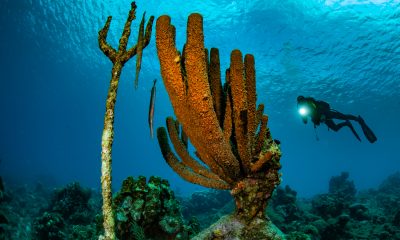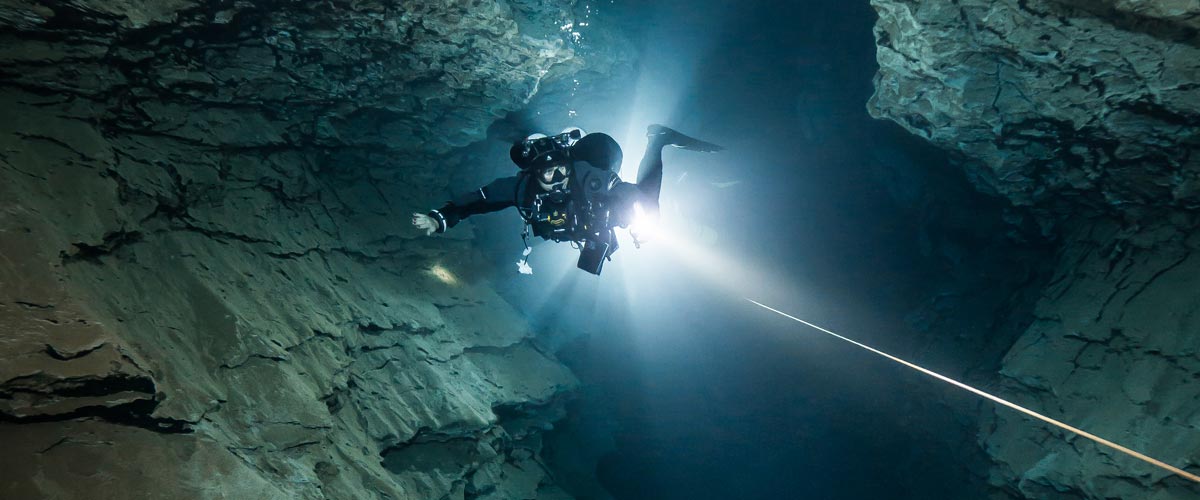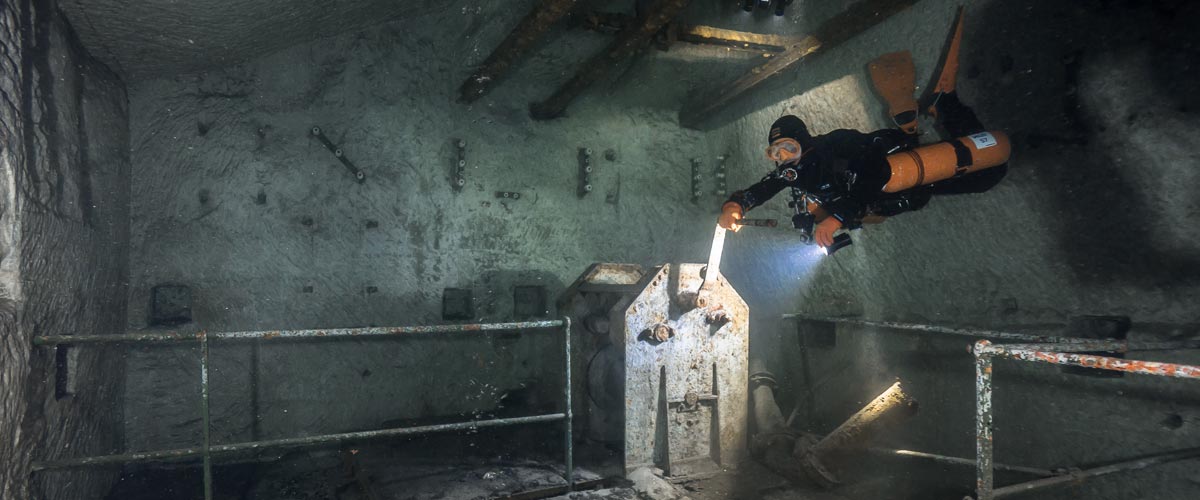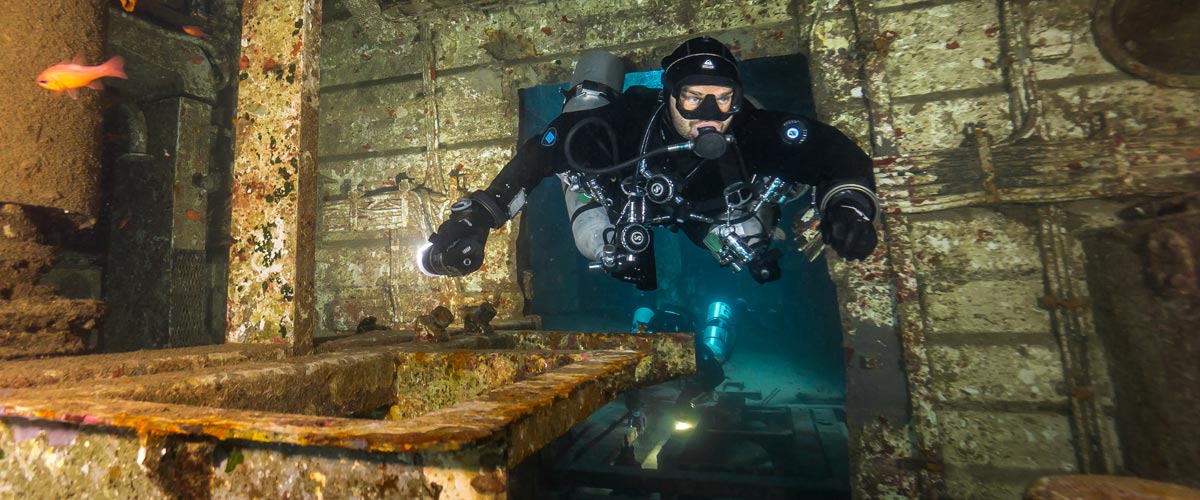Dive Training Blogs
How to Build your Save-A-Dive Kit
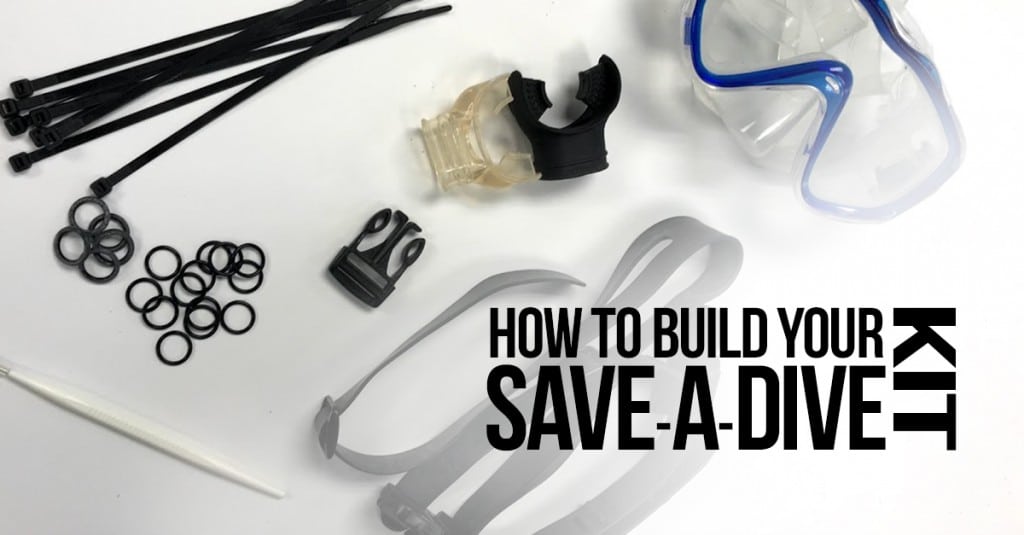
By Kate Heller
“My fin strap broke.” “My tank o-ring is missing.” My student’s BCD isn’t holding air.” Whether you’re a new, experienced, or professional diver, at one point or another you’ll encounter a reason to need a save-a-dive kit. It can seem difficult and overwhelming at first to decide what to add to your save-a-dive kit at any level, but it is actually fairly simple. You’ll want to consider a few things. First, think about Murphy’s Law, “What can go wrong will go wrong.” Second, analyze every aspect of the dives you’ve done thus far in your career. Third, think about the gear you have and what part(s) of it you might need to save during a day of diving. Keeping those in mind, we’ll look at a save-a-dive kit from the beginning diver’s kit to that of the instructor.
As a new open water diver who’s eager to continue their SDI diving career, you start to add to your personal gear. To start your own save-a-dive kit, you’ll want to look into getting a small dry box to fit everything you might need for your basic equipment. This would include your own mask, boots, fins, snorkel, etc. Aside from gear, also think about yourself as a diver. Keeping the three aspects to consider from above in mind, let’s look at each piece of gear.
Mask, Boots, Snorkel, Fins
What can go wrong?
- Mask strap breaks
- Mask keeps fogging up
- Zipper on the boots breaks
- Snorkel keeper breaks
- Fin strap breaks
- Fin buckle breaks
- Hair tie breaks
Analyze the dives you’ve done
- What’s been suggested to compensate for the mask problems?
- Could the boots be too tight so the zipper is distressed?
- Has the snorkel keeper come off during a dive already?
- Have you had to adjust the strap during your dive?
- Has the buckle come loose or unbuckled itself during a dive?
- Have you lost or broken a hair tie?
The parts you might need
- Spare mask strap
- Defog
- Tape to hold the boot in place for the time being until you can acquire a new set
- Zip-tie to replace the broken zipper
- Spare snorkel keeper either plastic, silicone, or neoprene
- Extra fin straps
- Extra fin buckles
- A pack of hair ties
Miscellaneous items to consider
- C-cards
- Extra snorkel/regulator mouthpiece
Even though your instructor, a boat crew member, or someone on site might have a back up of any of the aforementioned parts, it is best to build your own save-a-dive kit. It will help you as a newer diver to be prepared for the unexpected as well as help you to understand how to fix some of your own gear issues and become more independent as a diver.
Once you continue in your diving career and gain more experience, you’ll witness problems that other divers have had. You’ll see or talk about what they did to compensate for their issues and from that knowledge, be able to add to your save-a-dive kit. Whether you add a BC, regulator, computer, or wetsuit to your gear collection or expand on where you dive, you’ll have more to consider come building your kit.
BC, Wetsuit, Computer, Regulator
What can go wrong?
- Dump valve gets cracked
- String to the dump valve breaks
- Inflator button sticks
- Wetsuit zipper breaks
- Wetsuit zipper leash breaks
- Wetsuit rips or tears
- Tank that was rented is missing or blew an o-ring
- Computer is dead
- A hose leaks
Analyze the dives you’ve done and will do
- Is this leak one that can be fixed on site?
- Can the zipper be fixed or have a temporary rig set up?
- How many dives until the rip or tear gets worse?
- Is the wetsuit difficult to zip up?
- What does the boat crew do if an o-ring blows?
- Have you been taught to change a battery?
The parts you might need
- Spare dump valve
- Paracord or braided nylon line
- Wetsuit cement or patch
- Zipper wax/lube
- O-ring pick
- Tank size o-rings
- Computer batteries
- Extra regulator hose
Miscellaneous items to consider
- Extra pressure gauge
- Extra bolt snaps and clips
If recreational diving is as far as you wish to go and you want to explore more areas of recreational diving such as wreck, deep, sidemount, etc. you’ll want to continue referring back to the 3 aspects of diving to consider. From there, you’ll be able to build even further on your kit. You’ll also be a source of knowledge for the new divers that you meet and connect with.
If diving has become a passion that you want to share and educate others about on a professional level, there are other aspects of a save-a-dive kit as well as training to consider on top of your already assembled personal Kit.
Students’ Gear (Personal and Rented), Miscellaneous Gear and Equipment
What can go wrong?
- Student’s regulator is free-flowing
- Student’s ears wont clear
- Hose is leaking bubbles at the 1ststage
- Student forgets computer
- Computer dies
Analyze the divers you’ve taught as well as past personal dive experience
- What are the common problems you’ve seen while helping with a class?
- What were the quick solutions for those problems?
- What did you need to alleviate the problem?
The parts and tools you might need
- Allen keys
- Adjustable wrenches
- Needle nose pliers
- Extra LP/HP hoses
- Port plugs
- Variety of sized o-rings
- Scissors
- Dump valves, inflator hose
Miscellaneous items to consider
- EarShield
- Extra sunscreen
- Motion sickness pills
As an instructor, this save-a-dive Kit will not only be an asset to you but also a learning tool for your students. It will help educate them early about thinking of all the components that need to be considered when diving. It’s great to have everything for them, but creating a diver that can be a self-reliant problem solver without you there is a huge skill advantage.
A save–a-dive kit is such an important tool for all levels of diving. It provides a sense of reassurance knowing that you have the tools to fix what needs to be fixed. As you further your diving career, you’ll want to consistently think about the three aspects of that style of diving. What can go wrong, analyze other similar dives that you’ve done, and what tools or gear can you put in your kit to alleviate or prevent those problems from occurring. Though the above lists of items are helpful starting points, there are an infinite number of pieces that a diver, novice or experienced, and an instructor can add to their kits.
When creating your save-a-dive kit, cater it to your personal needs and diving environment. Talk to others and observe what they have in their kits to help get a better idea of some additions to yours. Keep in mind that, much like diving, you should not try to solve an issue that you haven’t encountered before or don’t have the training to adequately handle. You’ll always want to take the courses necessary to know how to fix the problem as well as ask for help. What are some of the components in your save-a-dive kit?
To find out more about International Training, visit www.tdisdi.com.

Blogs
Intro to Tech: What is it about?
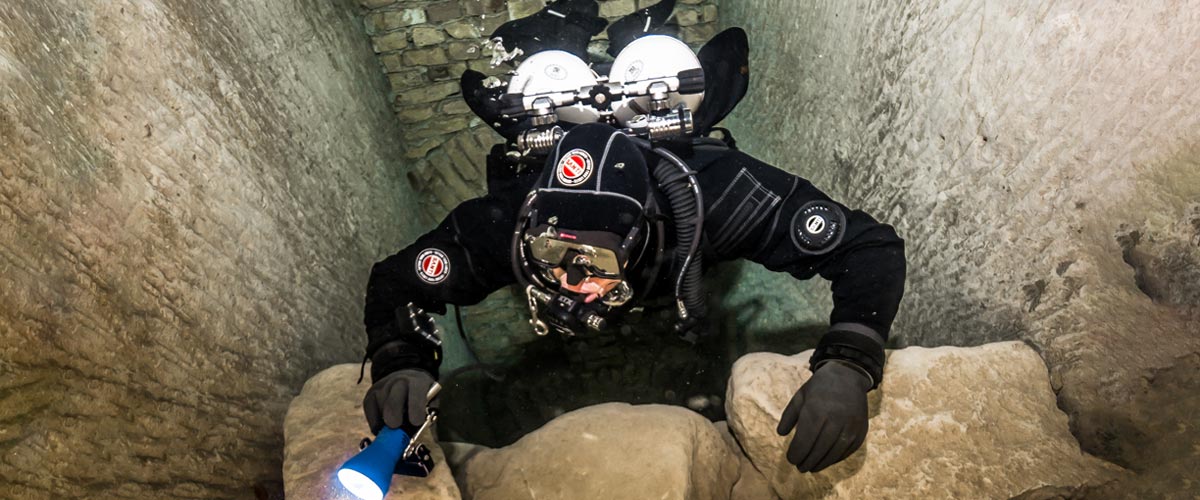
Article by José Pablo Mir
Pictures by Cezary Abramowski
The world of technical diving is exciting. It opens the door to new sites, depths, and bottom times. More importantly, it opens our minds to a new way of planning, facing, and experiencing dives, even those not purely technical.
Becoming a technical diver is a process, and like in other aspects of life, we should find the proper entry point that suits us best based on our knowledge and experience. The Introduction to Technical Diving course from TDI -the world’s largest and most recognized technical diving teaching organization- is the best option for divers who have yet to gain experience in the fundamental aspects of this new practice. The course’s content and its embrace of new techniques and technologies make it possible to acquire a solid foundation to learn and gain experience in this practice properly.
Becoming a technical diver is not something that happens overnight, whether deciding to become one or receiving a certification card stating we are now technical divers. It is a slow process extending farther away than any introductory course. It requires effort and dedication. But it will bring us satisfaction from day one -or two.
It is a matter of mentality
First, we must understand and accept that technical diving, involving greater depths, longer bottom times, exotic gases, virtual or real ceilings, and more, comes with higher levels of risk than the sport diving we have been practicing until now.
Although this discussion usually starts with a warning about risks, as I’ve done in the previous sentence, our practice is not a game of chance.
Technical diving is a rational activity that requires maturity and good judgment, and we will put everything into ensuring that each dive is a successful one -meaning we return from it safe and sound. With this understanding, we will strive to establish a mental attitude more aligned with our practice and its realities.
This new “technical diver” mindset we will develop will lead us to be more cautious in our executions, more analytical in our plans, more rational in our strategies, and more detailed in our procedures.
Experience will keep teaching us to know ourselves better, to keep our anxiety and other emotions under control, and to manage our impulses. Over time, our senses will sharpen, and we will be more attentive to the particulars of the situation we find ourselves in.
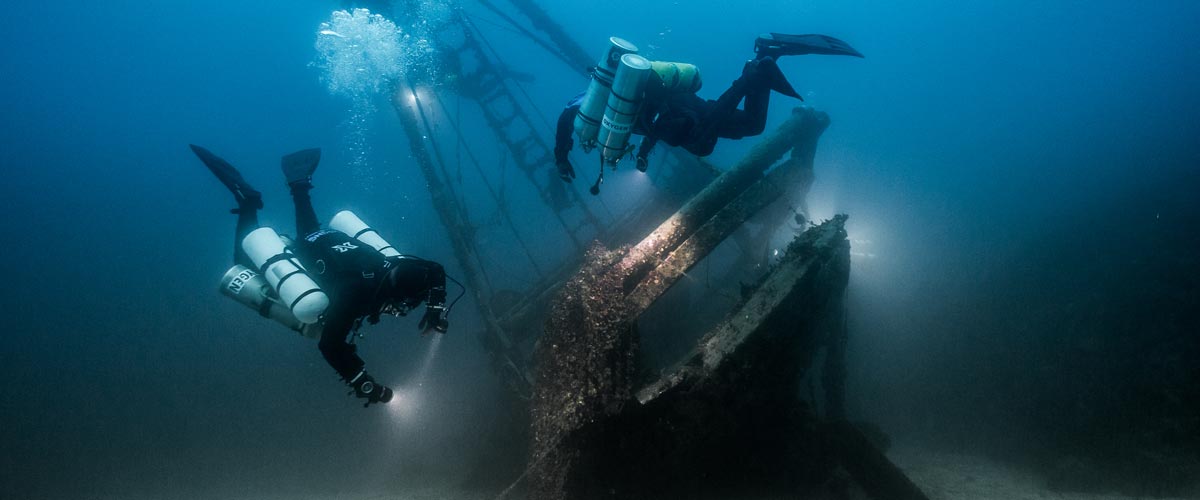
Strategies and procedures
Our strategies, those broad guiding lines tracing the path to follow, from how to approach planning to where, with what, and how we are willing to get there, will be more specific and more practical. Not because they magically become so, but because we will consciously and deliberately frame them that way.
We will establish clear, concise, and realistic procedures. Not only for the undesirable situations that may present themselves but also for those that are part of our dive objectives.
Even though, as technical divers, we often use equipment different from what we were previously accustomed to, it is essential to note that the gear does not make the diver. In a way, we could consider such equipment as the necessary tools to implement what our goal seeks to achieve, according to our strategies and procedures.
Technique plays an important role
We must put our greatest effort into learning and perfecting the different techniques we will be acquiring. Buoyancy, trim, propulsion, cylinder handling, deploying DSMBs and lift bags, valve drills, and more are essential skills we must begin to master to progress in our art. What we cannot do, when we need to do it, can harm us.
Our techniques must be effective and achieve the purpose for which they were devised. But they must also be efficient and require the least resources possible, including the time they take and the effort they demand. Effectiveness and efficiency will prevail over beauty and other considerations that may come to mind, although none of them should be mutually exclusive. A technique executed efficiently and effectively tends to have an inherent beauty.
Refining techniques is a lifelong mission. Some of them will be easy to master from the go; others, on the other hand, will be our life mission and will require many repetitions just to resemble the idea we have in mind of how they should be executed.
We must consider the environment
Our learning, the needs and musts of the practice we engage in, the experience we gradually gain, our strategies and procedures, and even our equipment and tools change with the environment.
Diving in the ocean, everything about us must be suitable for ocean dives. Conditions there rarely emulate those found in a pool, lake, or river. Variable winds and currents, greater depths, visibility conditions, other divers with uncertain skills around us, marine life, maritime traffic, distance from the coast, and many other factors add complexity and uncertainty.
It is never necessary to master the pool on the first day, but planning and aspiring to gradually cope with the ocean’s conditions is essential.
The cost of good training
We are aware that our resources are often scarce in relation to the possibilities of use we could give them if they were not. To a greater or lesser extent, we are part of the economic reality in which we are embedded.
Fortunately, the cost of good technical diver training is not an entry barrier. Comparing training and equipment costs, we see that the former are generally lower. Yes, lower cost for personalized service, essential to our future
performance and safety, than for a series of mass-produced products that are mere, albeit necessary, tools for an end.
The value of good training
The value of the training we received encompasses a range of characteristics, from emotional and methodological to technical and technological. TDI and its Introduction to Technical Diving course offer a deep and modern approach, with a teaching strategy that aims to create thinking divers, not merely obedient ones.
As technical divers, our knowledge is our primary tool. In this type of activity, what we don’t know can harm us.
Is this course optional?
Unfortunately, the fact that this Introduction to Technical Diving course is not a prerequisite for any subsequent training is an invitation to consider it optional. And we all know what usually happens to “optional” under budget constraints.
However, this course should be seen as optional only by those divers who are somehow familiar with the use of technical equipment, who have a mindset more in line with the requirements of this type of diving, who plan and execute the dives the proper “technical” way, who know their gas consumption rate, who are not intimidated by non-decompression tables, who feel comfortable using their dive computers, and know the techniques and have at least an acceptable level of buoyancy, positioning, and propulsion. Those can go straight to a more advanced training course, such as TDI’s Advanced Nitrox.
We must ask ourselves whether or not we are in that group.
Remember our goal: to have fun
Recreational diving is our passion. Jumping into the water carrying heavy equipment and having properly dotted our I’s and crossed our T’s have only one ultimate goal: fun. This is the activity we have chosen as a hobby. We must enjoy it; it must give us pleasure and make us vibrate.
Having a good time is not optional!
Blogs
Four opportunities to go pro in 2024 with Dive Friends Bonaire
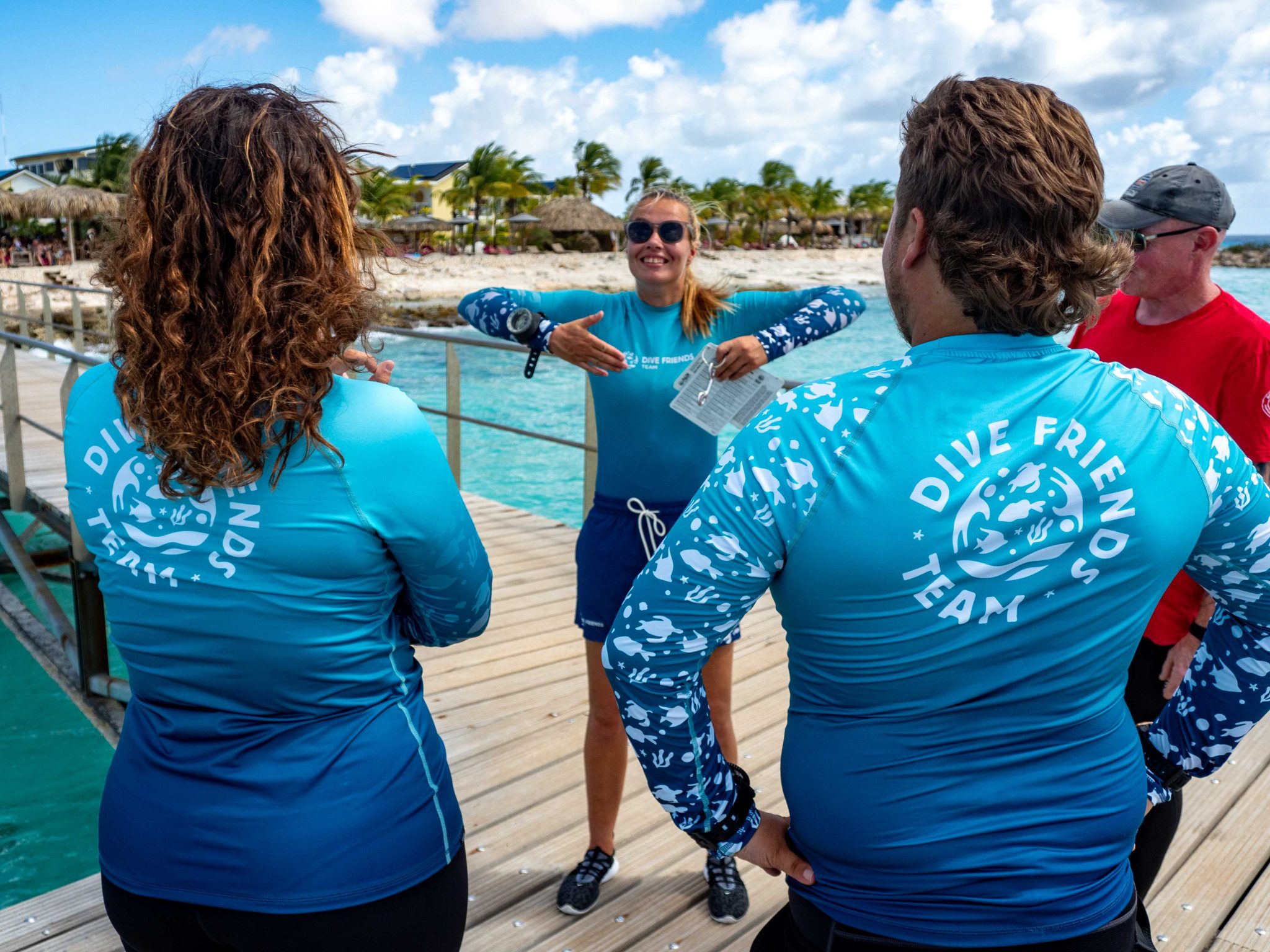
Dive Friends teaches the Instructor Development Course (IDC) several times a year to students who are eager to share their passion for diving with the world.
Dive Friends is known for the personal approach throughout the course. Their in-house course director will lead the students through every essential step, mentoring them to achieve their fullest potential as a dive instructor.
Applications for the following IDC start dates are now open:
- 12 April
- 5 July,
- 20 September
- 29 November
Partnership with Casita Palma
If the student opts for the IDC-Deluxe or IDC-Supreme package, their accommodation will be arranged for them at Casita Palma. This small and quiet resort is within walking distance from Dive Friends Bonaire’s main dive shop location and has everything you need to relax after an intense day of IDC training. Breakfast is included, so the student will always be fuelled and ready for their day.
Contact Dive Friends Bonaire’s Course Director Eddy for more information: coursedirector@divefriendsbonaire.com.
-

 News3 months ago
News3 months agoHone your underwater photography skills with Alphamarine Photography at Red Sea Diving Safari in March
-

 News2 months ago
News2 months agoCapturing Critters in Lembeh Underwater Photography Workshop 2024: Event Roundup
-

 Marine Life & Conservation Blogs2 months ago
Marine Life & Conservation Blogs2 months agoCreature Feature: Swell Sharks
-

 Blogs1 month ago
Blogs1 month agoMurex Resorts: Passport to Paradise!
-

 Gear News3 months ago
Gear News3 months agoBare X-Mission Drysuit: Ideal for Both Technical and Recreational Divers
-

 Blogs2 months ago
Blogs2 months agoDiver Discovering Whale Skeletons Beneath Ice Judged World’s Best Underwater Photograph
-

 Gear Reviews2 months ago
Gear Reviews2 months agoGear Review: Oceanic+ Dive Housing for iPhone
-

 Blogs3 months ago
Blogs3 months agoThe Thrilling Encounter with Tiger Sharks at Beqa Lagoon’s ‘The Colosseum’ with Coral Coast Divers











